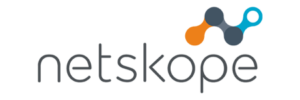Browse by network area
Mapped according to recognized market categories, each one is a CLM specialty with global services and highly developed expertise. Alternatively, search by business challenge.
Application Delivery Controllers (ADC)
What does it do?
ADCs are tools designed to enhance application performance, security, and resource efficiency. Today, they go beyond application acceleration and load balancing to deliver a highly advanced set of networking and security functions.
Our solutions:



Backup and Recovery
What does it do?
Backup and recovery are critical for business continuity and disaster recovery. They enable organizations to keep copies of any relevant data stored separately and securely, with the ability to use them to continue operations with minimal disruption after a catastrophic event, prolonged crisis, ransomware attack, and more.
Our solutions:



Breach and Attack Simulation (BAS)
What does it do?
BAS is a proactive approach that enables security teams to identify vulnerabilities and gaps in their defenses before they can be exploited by real adversaries.
Our solutions:

Cloud Access Security Brokers (CASB)
Data Security Posture Management (DSPM)
DDI (DNS, DHCP, IPAM)
What does it do?
DDI solutions manage critical core network services in an automated way — secure DNS (Domain Name System), DHCP (Dynamic Host Configuration Protocol), and IPAM (IP Address Management) — to ensure maximum efficiency and accuracy.
DevSecOps
What does it do?
DevSecOps automates the integration of security into every phase of the software development lifecycle, rather than treating security as a separate component. With the DevSecOps approach, organizations can reduce security risks while maintaining the speed and agility required for software development.

Distributed File System (DFS) Storage
What does it do?
Distributed file system storage uses a single parallel file system to cluster multiple storage nodes, delivering high throughput and capacity in a linear manner. It provides a single namespace and storage pool to offer high-bandwidth data access to multiple hosts in parallel.
Endpoint Detection and Response (EDR)
What does it do?
Endpoint Detection and Response (EDR) goes beyond traditional Endpoint Protection Platform (EPP) capabilities by detecting emerging malicious threats, preventing attacks, supporting investigation and remediation of dynamic security incidents, and enabling proactive threat hunting.
Our solutions:

Endpoint Protection Platform (EPP)
What does it do?
Endpoint Protection Platforms (EPPs) are a critical line of defense, designed to detect and block malicious threats at the device level. They leverage a variety of capabilities to identify newly discovered attacks based on the latest known indicators of compromise, as well as adversary tactics and techniques.
Our solutions:

Identity Governance and Administration (IGA)
What does it do?
IGA (Identity Governance and Administration) is fundamental to digital security, as it helps ensure that only authorized individuals have access to the right information at the right time.
Our solutions:



Identity Access Management (IAM)
What does it do?
Identity and Access Management (IAM) is the technology that ensures the right individuals have authenticated access to the right resources, at the right time, for the right reasons — supporting strong cybersecurity posture and compliance with required standards.
Our solutions:




Identity Threat Detection and Response (ITDR)
What does it do?
ITDR stands for Identity Threat Detection and Response. It’s a cybersecurity approach focused on protecting digital identities and sensitive data from threats.
Our solutions:





Infraestrutura Hiperconvergente (HCI)
What does it do?
Hyperconverged Infrastructure (HCI) is a unified, software-defined system that combines all the elements of a traditional data center — storage, computing, networking, and management — into a single solution.
Our solutions:

IoT/OT/IoMT
What does it do?
The Internet of Things (IoT) is a network of physical objects embedded with technology to support a wide range of applications. OT (Operational Technology) refers to the hardware and software used to monitor and/or control industrial equipment, assets, and processes — distinguished from traditional Information Technology (IT).
Our solutions:


Multi-factor authentication (MFA)
What does it do?
MFA (Multi-Factor Authentication) is a security technology that adds extra layers of protection to prevent unauthorized access to networks, systems, and services. It’s important because if a password is compromised, the second form of authentication can still block access to the account.
Our solutions:



Network Access Control (NAC)
What does it do?
High-performance NAC (Network Access Control) solutions enforce policies to control network access by devices and users — without compromising productivity.
Our solutions:


Network Detection and Response (NDR)
What does it do?
Network Detection and Response (NDR) evolved from the network traffic analysis market category, reflecting the growing sophistication of behavioral analytics and artificial intelligence to enhance threat detection capabilities — all without compromising the performance of high-speed networks.
Our solutions:



Network Packet Brokers
What does it do?
Network Packet Brokers consolidate real-time monitoring information from sensors distributed across the network, optimizing the accuracy and performance of networking and security tools with the highest-quality data. They eliminate “blind spots” by providing comprehensive visibility and flow of network traffic.
Our solutions:


Next Generation Firewalls (NGFW)
What does it do?
Next-Generation Firewalls (NGFWs) have evolved beyond traditional firewall platforms to better protect organizations and enable a wide range of powerful cybersecurity features with significantly greater control.
Our solutions:


Object Storage (S3)
What does it do?
Distributed file system storage uses a single parallel file system to cluster multiple storage nodes, delivering high throughput and capacity in a linear fashion. It presents a single namespace and storage pool to provide high-bandwidth data access to multiple hosts in parallel.
Our solutions:



Privileg Access Management (PAM)
What does it do?
Privileged Access Management (PAM) ensures that the critical functions of administrators and other privileged users are not compromised. It is typically implemented as part of an Identity and Access Management (IAM) solution.
Our solutions:

Data Protection and Encryption
What does it do?
Data encryption is a fundamental aspect of cybersecurity strategy. It allows sensitive data to be encrypted while at rest, in transit, or both — ensuring that it can only be accessed or used by authorized users or machines.
Our solutions:

Remote Browser Isolation (RBI)
What does it do?
Remote Browser Isolation (RBI) separates the user’s browsing activity from their device by running web content on a remote server. The user interacts with a secure visual representation of the content, preventing malicious code from compromising the system.
Our solutions:



Secure Access Service Edge (SASE)
What does it do?
SASE (Secure Access Service Edge) is a cybersecurity concept based on the convergence of (SD-)WAN capabilities and network security functions. It identifies users and devices, enforces policy-based security, and delivers secure, as-a-service access to applications and data.
Our solutions:


Secure Email Gateways
What does it do?
Secure Email Gateways protect one of the most risk-prone attack vectors — email — by preventing the spread of malware, malicious attachments, phishing attacks, and unwanted spam. They help preserve the integrity of email content, ensuring it reaches only its intended recipients.
Our solutions:

Security Information and Event Management (SIEM)
What does it do?
The core role of SIEM (Security Information and Event Management) solutions is to collect and analyze all available security-related data — typically in large volumes and with high complexity — generating prioritized real-time insights for security teams to act on, along with detailed reports for compliance purposes.
Our solutions:


Security Orchestration, Automation and Response (SOAR)
What does it do?
SOAR (Security Orchestration, Automation, and Response) solutions enable organizations to respond to threats and security incidents with little to no human intervention. They enhance cybersecurity teams with intelligent, automated digital capabilities, freeing up resources to focus on tasks that require human judgment and critical decision-making.
Our solutions:

Security Service Edge (SSE)
What does it do?
Security Service Edge (SSE) is a cloud-based security solution that integrates multiple security services into a single platform: Secure Web Gateway (SWG), Zero Trust Network Access (ZTNA), Cloud Access Security Broker (CASB), and Firewall as a Service (FWaaS).
Our solutions:



Software-Defined Network (SDN)
What does it do?
SDN (Software Defined Networking) is a network architecture that enables the management and control of a network through software, offering greater flexibility, automation, and centralized control.
Our solutions:

Software-Defined WAN (SD-WAN)
What does it do?
SD-WAN provides dynamic, policy-based application path selection across multiple WAN connections and supports additional services such as WAN optimization and firewalls — which are increasingly important as organizations shift services from the data center to the edge.
Our solutions:




Tokenization
What does it do?
Tokenization in cybersecurity is a security process that replaces sensitive data with tokens — identification symbols that carry no exploitable value or confidential information.
Our solutions:

Unified Endpoint Management (UEM)
What does it do?
Unified Endpoint Management (UEM) is software that enables IT and security teams to manage, monitor, and secure all of an organization’s devices. UEM is the evolution of Mobile Device Management (MDM) and Enterprise Mobility Management (EMM).
Our solutions:

User and Entity Behaviour Analytics (UEBA)
What does it do?
UEBA (User and Entity Behavior Analytics) solutions use analytics to build baseline profiles and behaviors of users and entities (such as hosts, applications, network traffic, and data repositories) over time and across peer group horizons. Activities that deviate from these baselines are flagged as suspicious, and further analysis of these anomalies can help uncover threats and potential incidents.
Our solutions:


Automated Security Validation (ASV)
What does it do?
Automated Security Validation (ASV) is a continuous process that involves: ongoing exposure validation, security control monitoring, penetration testing, and compliance verification. It’s a proactive approach that enables organizations to identify and fix security gaps before they can be exploited by malicious actors.
Our solutions:

Virtual Desktop Infrastructure (VDI)
O que faz?
VDI stands for Virtual Desktop Infrastructure. It is a software tool that enables users to remotely access corporate computing systems from any device.
Our solutions:


Web Application & API Protection (WAAP)
What does it do?
WAAP (Web Application and API Protection) is a security technology that protects web applications and APIs from cyberattacks. It is an evolution of the traditional Web Application Firewall (WAF).
Our solutions:



Web Application Firewall (WAF)
What does it do?
Web Application Firewalls (WAFs) protect web applications and APIs against a variety of attacks — such as business logic attacks, online fraud, SQL injection, and cross-site scripting (XSS) — providing a specialized defense mechanism to safeguard critical web assets.
Our solutions:




Wired & Wireless LAN Access
What does it do?
Wired and wireless LAN access refers to the essential technology that enables high-performance, secure, and dynamic connectivity to corporate local area networks.
Our solutions:

Network and systems control
What does it do?
Network and systems control provides tools to manage, monitor, and optimize the performance of IT infrastructures. It enables real-time traffic visibility, centralized device configuration, anomaly detection, policy management, and security enforcement. These solutions help maintain the stability, efficiency, and protection of networks and systems, ensuring continuous operations and support for digital business.
Our solutions:

Data loss Prevention (DLP)
What does it do?
Data Loss Prevention (DLP) is a cybersecurity tool that helps organizations identify and prevent data breaches, whether intentional or accidental.
Our solutions:





Cloud Native Application Protection Platform (Cnapp)
What does it do?
A platform that provides comprehensive security for cloud-native applications. It protects against vulnerabilities by monitoring the environment in real time and enforcing security policies. Additionally, it facilitates threat detection and response, ensuring compliance and the integrity of applications.
Our solutions:

Mobile Threat Defence (MTD)
What does it do?
Mobile threat protection safeguards mobile devices against cyber threats such as phishing, malware, and other malicious activities. It ensures secure usage of smartphones and tablets by detecting and blocking harmful content, apps, and network attacks in real time.
Our solutions:


MDR (Managed Detection and Response)
What does it do?
It is a cybersecurity service that leverages technology and human expertise to help organizations identify and respond to cyber threats.
Our solutions:


Search by business challenge
Join us in our mission to drive the transition to a fully trusted digital world. Get in touch with a specialist to discuss your needs. Alternatively, explore solutions by network area.
Cyber Attacks
What does it do?
Cyber attacks are constantly evolving, with attackers finding increasingly new and inventive ways to infiltrate networks. In addition to more data being stolen from companies, large-scale cyber attacks — such as WannaCry and Petya/NotPetya — are also becoming more common. Here we present some of our strategic vendor solutions, designed to keep your business protected and ensure you’re always one step ahead of attackers.
Our solutions:














Data Security
What does it do?
Data is one of a company’s most valuable assets, and while robust data security is essential for all organizations today, cyberattacks are inevitable — and data loss will happen. Cyberattacks targeting data are a growing challenge, especially since most stolen data has value and is useful to hackers. Here we present leading data security vendors to help you stay one step ahead of constantly evolving threats.
Our solutions:
















Datacenter
What does it do?
Today’s data centers must be cost-effective, agile, and secure as the demand for applications and data workloads continues to grow. With the assumption that attacks are inevitable and the need for increased storage and shifting workloads is on the rise, here are some of our carefully selected vendors that can support the rapid pace of change in the data center.
Our solutions:













Insider Threats
What does it do?
Nearly all attacks within organizations start with an insider. Whether malicious or compromised, insiders represent the greatest threat to the network. Many organizations are shifting their focus to address insider threats. Here are some of the leading technologies to help strengthen your defenses.
Our solutions:









IoT/OT/IoMT
What does it do?
The Internet of Things brings an explosion of data being added to, stored, and processed across networks. While this trend offers many opportunities, it also introduces significant risks. The more devices connected to your network, the larger the attack surface — making visibility crucial. You can’t protect what you can’t see. Explore vendor solutions here that can support you as the number of connected devices continues to grow. The challenge is constantly evolving.
Our solutions:


Cloud Migration
What does it do?
There are many factors for organizations to consider when deciding to move workloads to the cloud.
Which workloads should you migrate first? Do you plan to go fully cloud-based or start with a hybrid approach?
How can you keep your data safe and secure in the cloud? How do you ensure the right people have access to the right data at the right time?
Our solutions:











M365 Migration
What does it do?
More and more companies are migrating to M365. Exclusive Networks offers a range of essential solutions to help you identify, protect, and control access to your company’s critical data while migrating key workloads to the cloud. Here, we present leading vendors that can support your transition to the cloud.
Our solutions:




Orchestration
What does it do?
Orchestration is becoming increasingly important for businesses, as the growing number of tools customers use can lead to alert fatigue and underutilized solutions. Orchestration solutions group tasks from different security and network tools to optimize workflows.
Automating and orchestrating your network environments can bring business benefits such as improved efficiency, reduced operational costs, and the ability for networks to scale and become more agile and responsive.
Our solutions:








Visibility
What does it do?
You can’t protect what you can’t see. As data demand grows and more devices are added to networks, they become increasingly complex. Security is a major concern, as network attacks continue to rise and become more sophisticated. Beyond the right tools, greater visibility and intelligence are essential to detect, combat, and mitigate threats.
Our solutions:











SOC Optimization
What does it do?
SOC optimization is a process aimed at improving the efficiency, effectiveness, and resilience of a Security Operations Center (SOC). The goal is to strengthen an organization’s security posture, reduce exposure risk, and ensure proactive protection against cyber threats.
Our solutions:




Monitoring and Analysis
What does it do?
Monitoring, Analytics, Diagnostics, and Observability combine tools to monitor systems in real time, analyze data to identify trends, diagnose the root cause of issues, and understand the internal behavior of complex systems. It captures metrics, logs, and distributed traces, enabling IT and DevOps teams to improve efficiency, reduce failures, and ensure high availability and performance.
Our solutions:



Disaster Recovery (Recuperação de Desastres)
What does it do?
Disaster Recovery is a set of strategies and tools designed to quickly restore systems, data, and critical operations after disruptions caused by failures, natural disasters, cyberattacks, or human error. It includes regular backups, redundancy, data replication, and tested recovery plans — ensuring business continuity and minimizing the impact of potential outages.
Our solutions:



Business Continuity
What does it do?
Business Continuity is a set of processes and strategies that ensures the uninterrupted operation of essential activities during and after incidents that may cause disruptions, such as natural disasters, technological failures, or cyberattacks. It includes comprehensive planning, risk analysis, system redundancy, and efficient communication — ensuring organizational resilience and minimizing operational and financial impacts.
Our solutions:



Mission-Critical Environment Support
What does it do?
Mission-critical environment support encompasses the practices, technologies, and services designed to ensure the continuous and reliable operation of systems and applications essential to an organization’s operations. It is fundamental for maintaining high availability, consistent performance, and rapid recovery in case of failures — as any downtime can lead to financial losses, reputational damage, or compromise strategic operations.
Our solutions:
